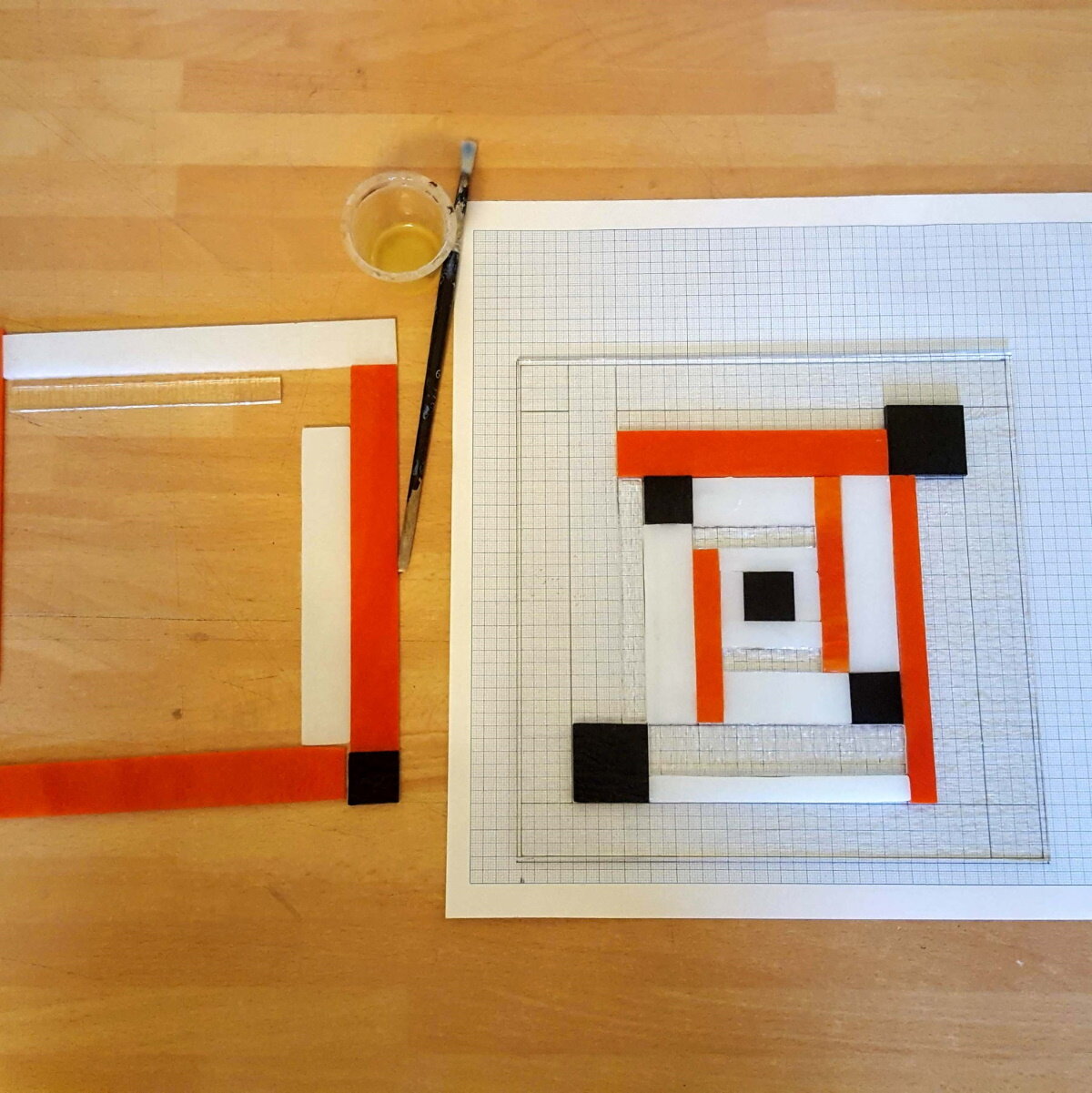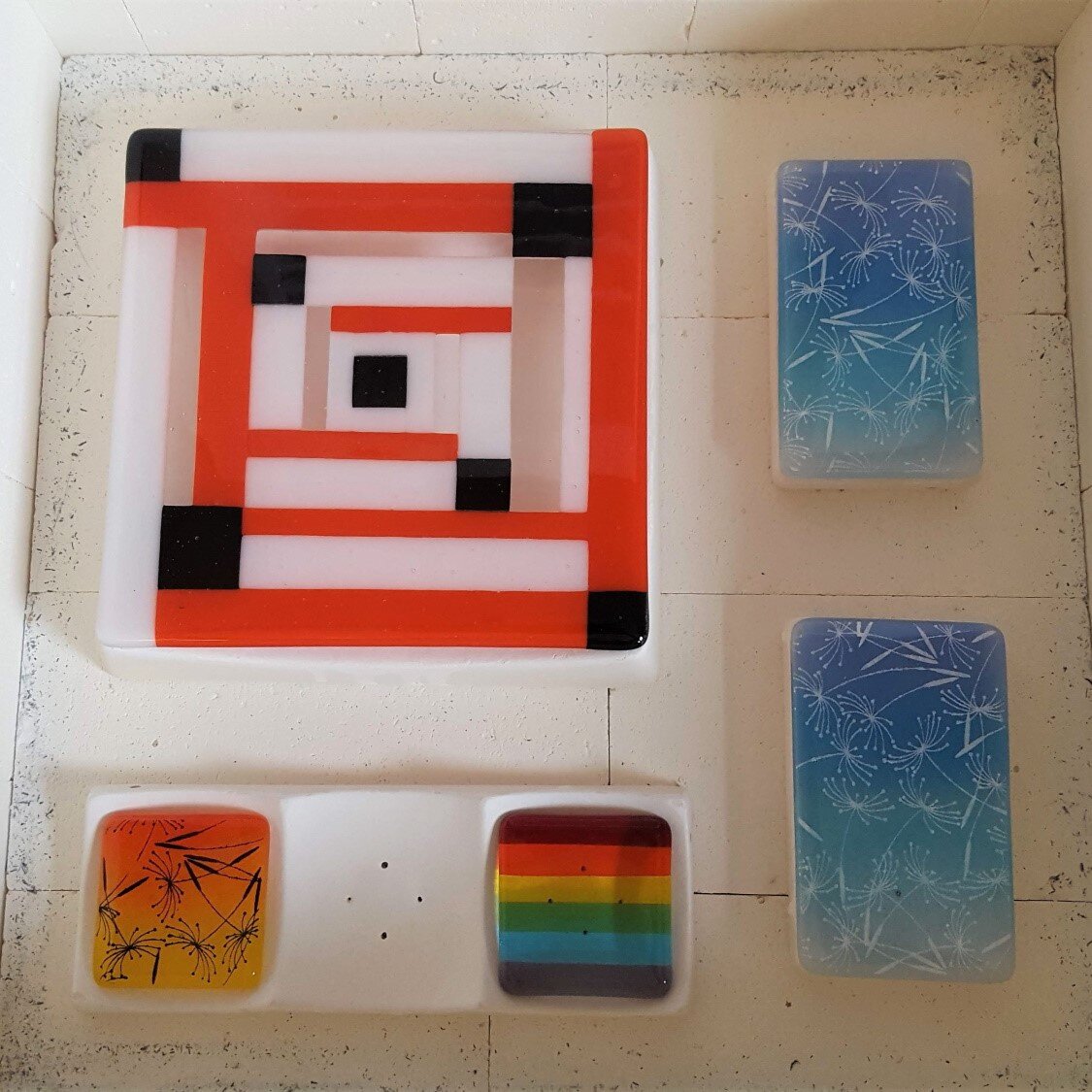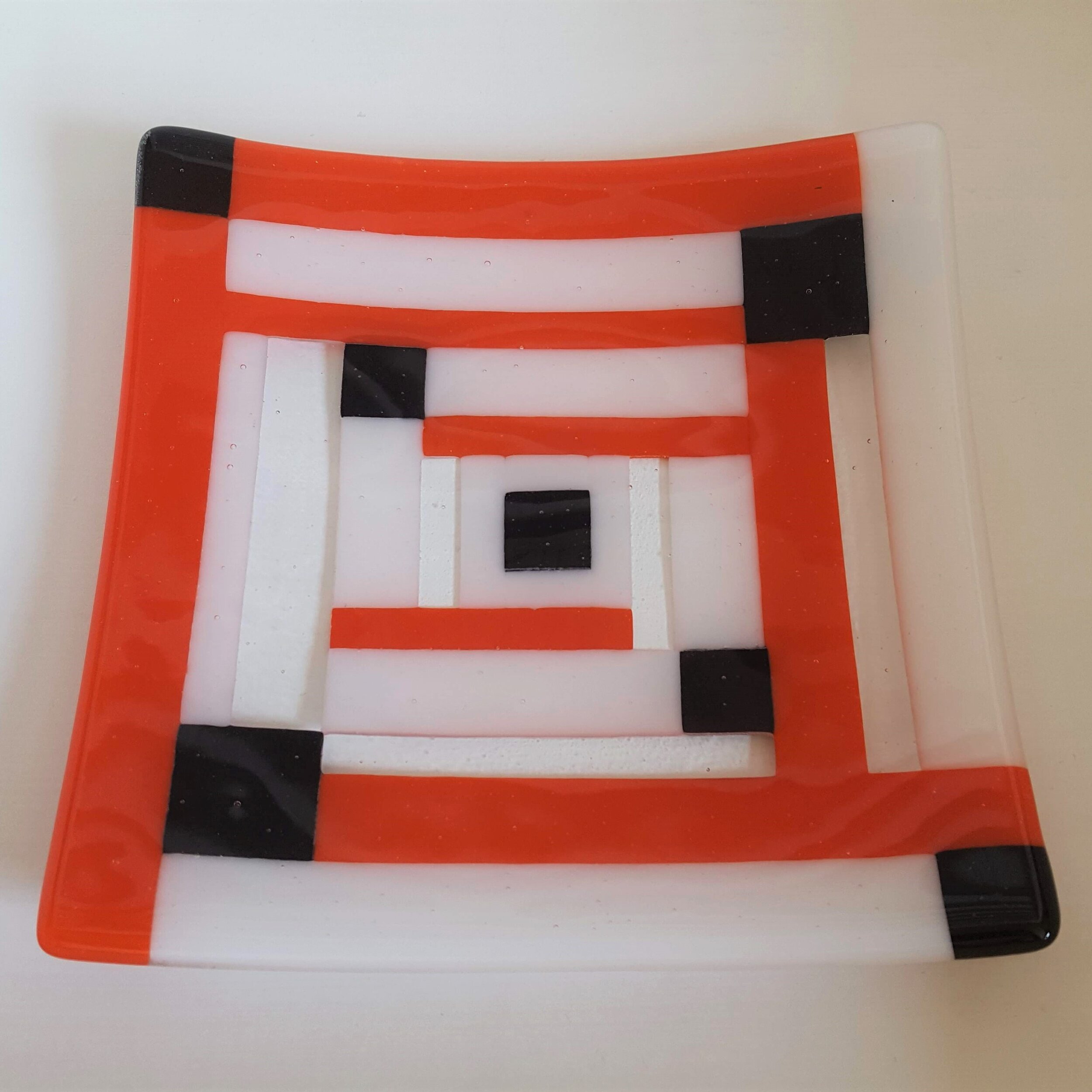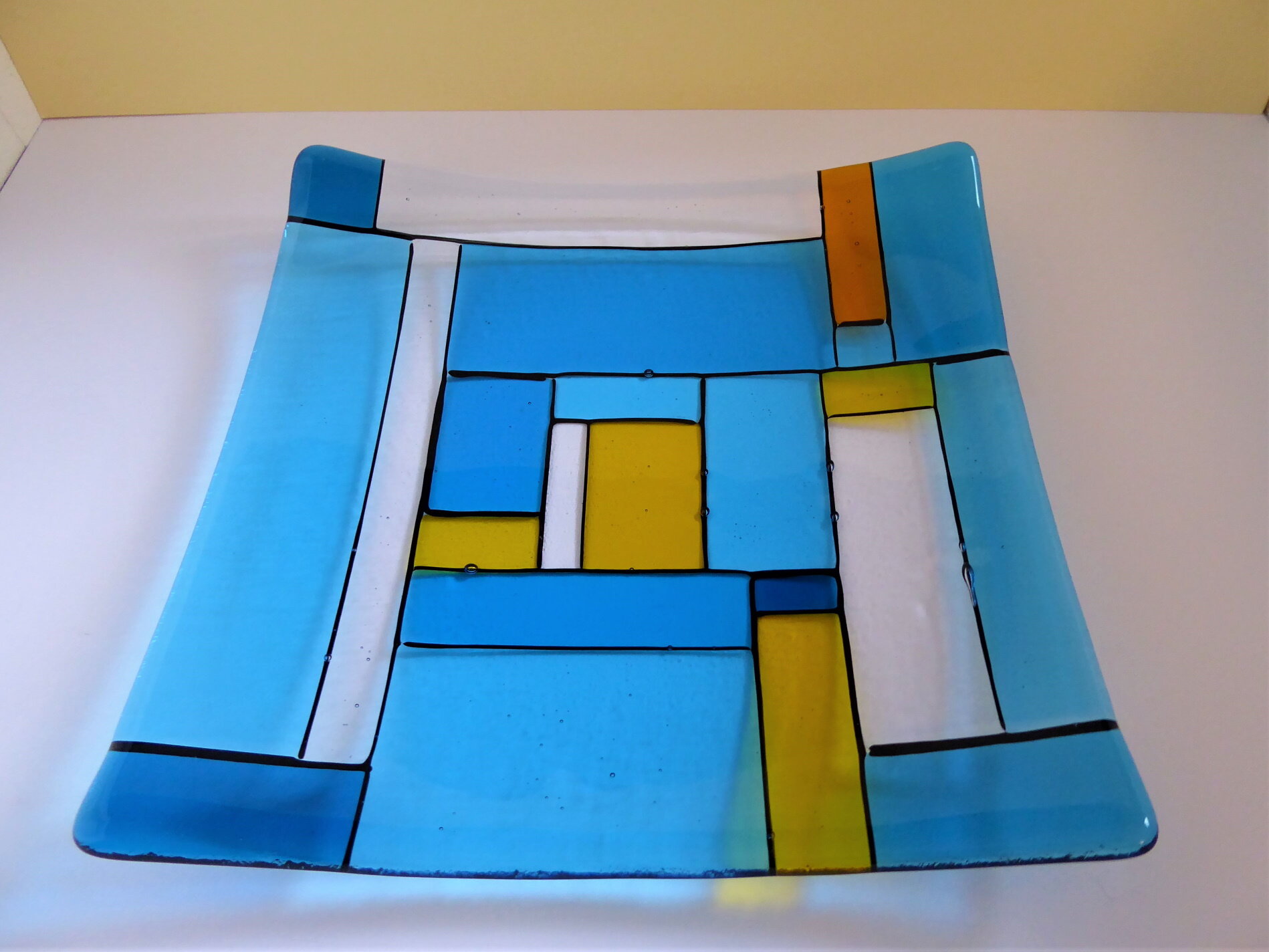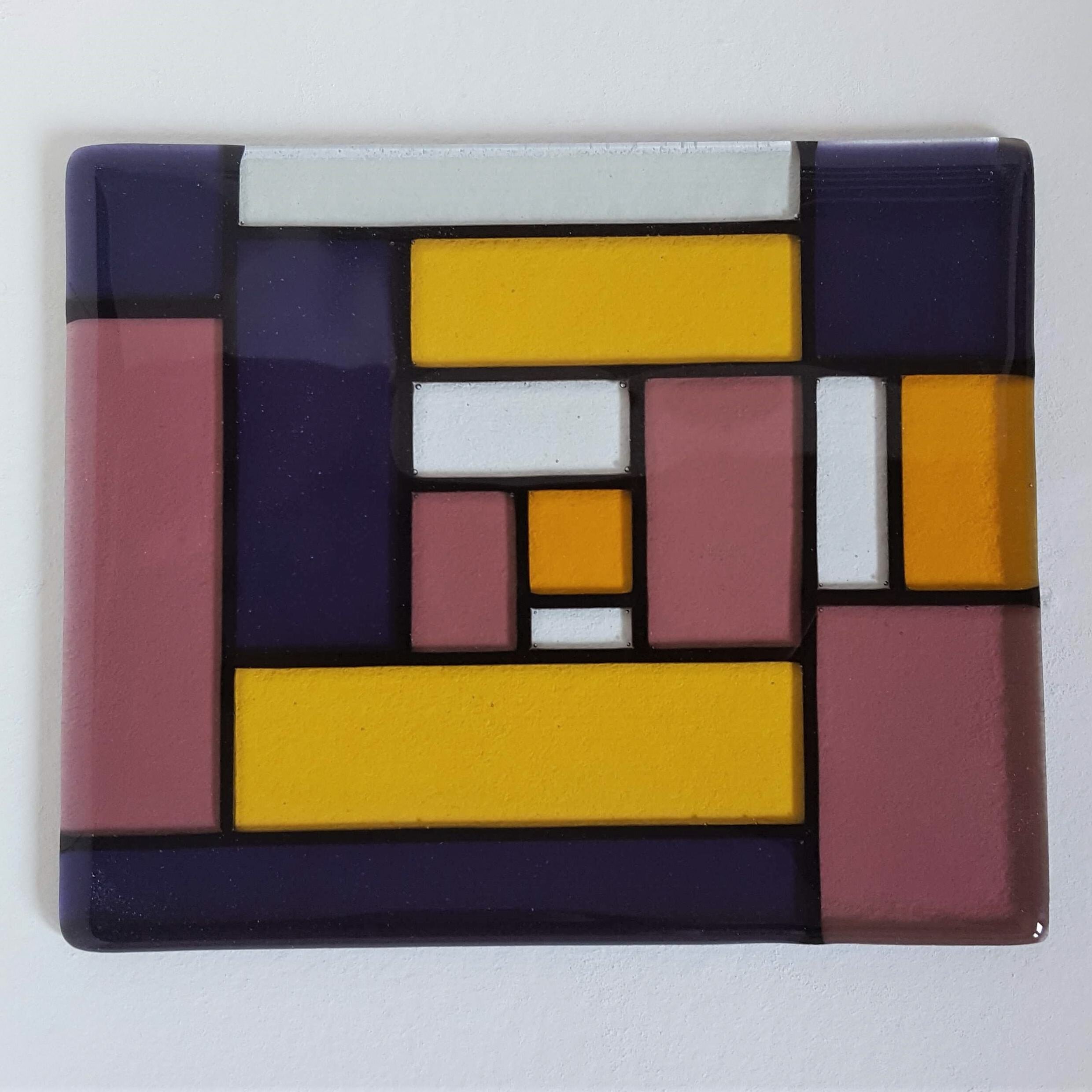De Stijling Lockdown
Life under Lockdown is slowly starting to feel like a new normal for me.
Obviously, I'm gutted that many events I booked for my Eva Glass Design stall have been postponed; and all the lovely independent shops stocking my work have been closed in line with social distancing. This is all a good thing in the long run though as we all know how essential it is to stop the spread of Covid-19.
But on the plus side, I’ve had more time for creative development. I've been experimenting with some new designs for fused glass window art and homeware inspired by the bold colours and forms of the early 20th century modern art and design movements Bauhaus and De Stijl.
Eva Glass Design fused glass square plate in red, black and white with a De Stijl-inspired design
Research and Development
Staying at Home over the last few months has given me a lot of time to research into the backgrounds and development of the Bauhaus and De Stijl movements.
Notes and sketches for developing templates for fused glass window art and homeware
The Bauhaus school considered making to be an important social, symbolic and intellectual endeavour, and sought to unify art, craft and technology. I certainly agree with that; and its interesting how the studio glass movement has developed since the 1960s when technology made the creation of compatible fusing glass possible.
The Neoplastic style advocated by the De Stijl group has an objective of absolute abstraction. This is achieved through minimalist designs using horizontal and vertical lines, strong geometric forms, and coloured block-like elements. When I came to sketching out designs there was a lot of maths and measuring involved. I went through a lot of graph paper whilst coming up with ideas!
Colour schemes
Strictly speaking, Neoplasticism favours only using primary colours alongside black, white and grey. But there are so many beautiful shades of fusing glass available that I couldn't restrict myself to this. Instead, I'm combining the strong shapes and lines favoured by Piet Mondrian with limited palettes of coloured fusing glass in complementary shades. I'm particularly favouring sky blue and topaz with a bright yellow for contrast in this square plate and coaster designs.
Eva Glass Design turquoise and yellow fused glass homeware
Product development
These photos show some of the stages involved in making a fused glass plate using a red, white and black colour scheme. After finalising the design, I cut each piece of glass to assemble the coloured bottom layer and fused a square of clear glass over the top. The square “blank” was then slumped over a mold in a separate firing.
Challenges and problem-solving
A particular challenge has been how to incorporate black lines between the coloured blocks, and I've tried several different techniques using thin strips of glass stringer and noodles.
Stringer fused as a top layer tends to “float” on top of the design rather than flowing right the way through the piece. This can be nice in other designs though, and led me to think about a second set of pieces in the same two colour schemes.
I also tried fusing stringer and noodles into the body of the design.
The blue plate on the left has black stringer fitted into the coloured layer of glass. As well as being very fiddly to construct, the lines come out very thin. There is also a tendency to create bubbles of trapped air as the stringer is much thinner than the adjacent 3mm sheet glass.
The rectangular fused glass “blank” in a third colour scheme of pink and amber on the right is ready to be slumped into a candle sconce. To make this piece, I laid black noodles vertically on the bottom layer between the coloured pieces of glass. This has the advantage of giving very clear and straight black lines which go all through the design.
Eva Glass Design turquoise and yellow fused glass candle sconce with a Piet Mondrian inspired design
The blue and yellow candle sconce has black stringer fused in between layers of coloured glass and clear glass. To minimise air bubbles I added a thin sprinkling of clear glass powder in the middle layer. With this technique, the black lines are straight and strong and flow through the piece.
These collections are all still a work in progress but I hope that by the time my events start up again some of the pieces will be on sale at them.
References and further reading
Design of the 20th Century, Taschen, 1999
Daily Telegraph, The most important art movement you’ve never heard of, Feb 2017
Wikipedia: Bauhaus
Wikipedia: De Stijl
Eva Pollard, May 2020




